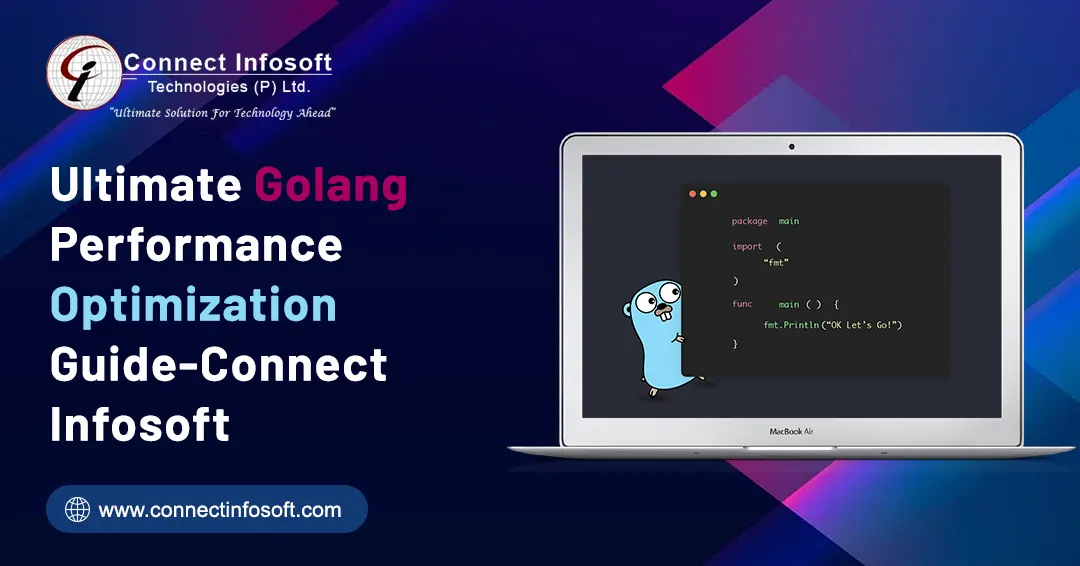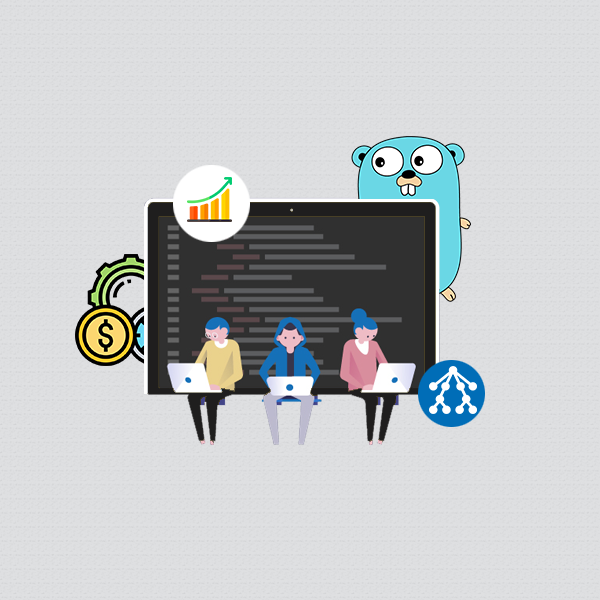Ultimate Golang Performance Optimization Guide-Connect Infosoft

Golang is a popular programming language for cloud-based and server-side applications. Artificial intelligence, machine learning and data science are among the rapidly growing industries. You are well aware that Golang is a popular programming language for developing such applications. This blog post includes sure-fire Golang performance optimisation strategies that can help you scale your Golang application for greater efficiency and effectiveness.
Introduction
We have the most anticipated patterns for your application to boost Golang performance. Everyone wants a quick app (a user wants rapid delivery and a developer wants fast performance), but an entrepreneur wants both!
Optimizing the performance of Go (Golang) applications involves various techniques and considerations. Here's an ultimate guide that covers essential practices for Golang performance optimization:
1. Profile Your Code:
To begin, profile your application to detect performance bottlenecks. Go provides built-in profiling tools like the `pprof` package and the `go tool pprof` command-line tool. Profiling helps you understand which parts of your code consume the most time and resources.
2. Optimize Algorithms and Data Structures:
Analyze your code for inefficient algorithms or data structures that can be optimized. Look for areas where you can replace slow operations with more efficient alternatives. Consider using appropriate data structures like maps, slices and arrays based on the specific requirements of your application.
3. Efficient Memory Management:
Go's garbage collector (GC) handles memory management, but inefficient memory usage can impact performance. Avoid unnecessary allocations by reusing objects and minimizing the use of `make` and `new` operations. Be cautious with large data structures that could strain the GC. Use tools like the `sync.Pool` package to reuse objects and reduce overhead.
4. Concurrency and Parallelism:
Leverage Go's concurrency features, such as goroutines and channels, to design concurrent and parallel programs. Identify sections of your code that can benefit from concurrent execution and partition work accordingly. However, be mindful of excessive goroutine creation, unnecessary locking, or contention that could introduce performance overhead.
5. Use The Right Libraries and Packages:
Choose libraries or packages that are well-optimized and have a good performance record. The Go ecosystem offers a wide range of third-party packages, so consider their performance characteristics before integrating them into your application.
6. Minimize I/O Operations:
I/O operations, such as disk reads/writes or network communication, can be a bottleneck. Reduce the number of I/O operations by batching requests, using buffered I/O and employing techniques like connection pooling or caching.
7. Benchmark and Test:
Regularly benchmark and test your code to measure performance improvements and regressions. Go provides the `testing` package and the `go test` command for writing and running tests. Use the built-in benchmarking tool (`go test -bench`) to identify performance changes and track progress.
8. Compiler Optimizations:
Go's compiler (`gc`) applies various optimizations by default, but you can explore compiler flags to enable specific optimizations. For example, the `-N` flag disables optimizations, allowing you to compare the performance impact. The `-gcflags` flag allows you to pass custom compiler flags.
9. Use Profiling and Tracing Tools:
Apart from the built-in `pprof` package, you can use external profiling and tracing tools like `pprof`, `go-torch`, or `jaeger` to gain deeper insights into your application's performance. These tools help identify hotspots, visualize performance data and trace requests across distributed systems.
10. Monitor and Analyze Production Systems:
Monitor your production systems to identify performance issues in real-world scenarios. Use tools like monitoring services, log aggregation and performance analytics to gain visibility into your application's behavior and detect performance anomalies.
Conclusion:
Remember that performance optimization is a continuous process. Regularly revisit your codebase, profile critical sections and benchmark to ensure your optimizations remain effective as your application evolves.
Lastly, it's important to note that premature optimization can hinder development productivity. Focus on optimizing areas that truly impact performance and prioritize clarity, maintainability and correctness in your code.
TAGS: Ultimate Golang Performance Optimization Guide, Looking for Golang Development Service Company in India, Looking for web development company, Looking for Dev Team in India, Custom Web App Development, ERP, CRM, Customer Relation Management Service, Bots / AI Development Services, Custom Plugin/Integration Service


